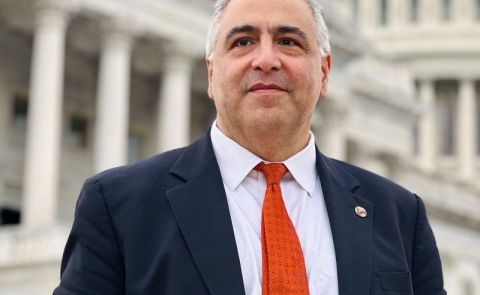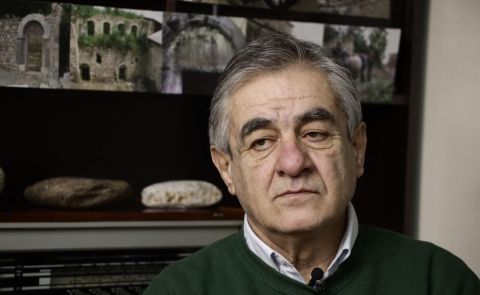
Ambassador Nersesyan: Transit Through Armenia Does Not Require "Corridor"
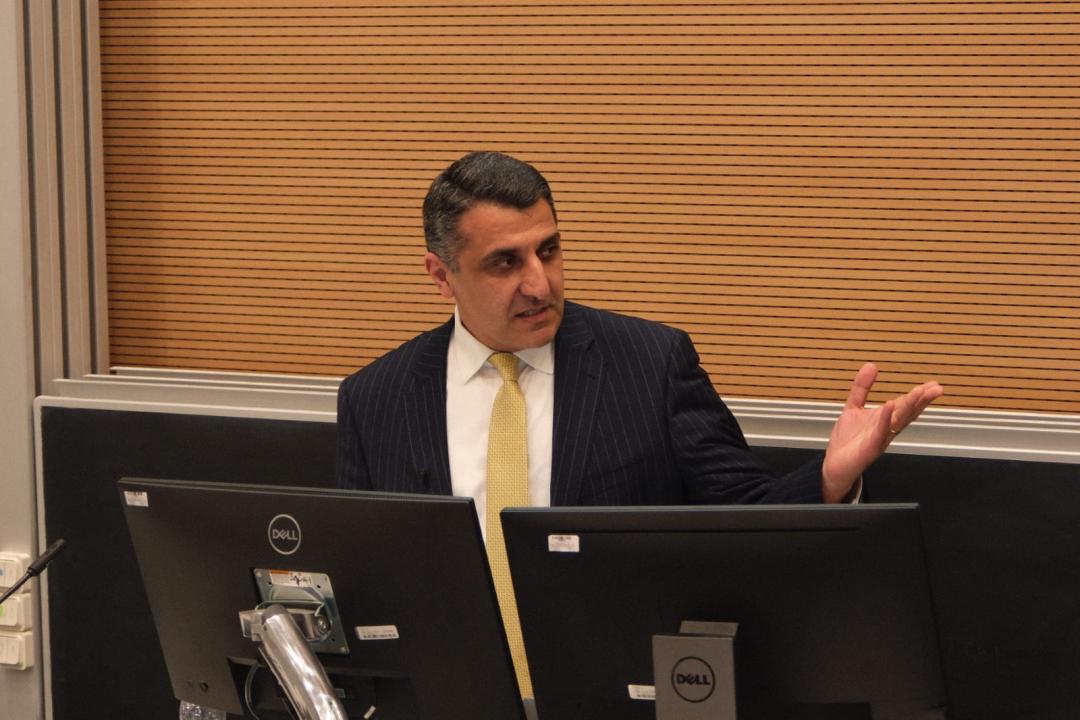
In early August, the Armenian Foreign Ministry confirmed that bilateral talks were making progress as Azerbaijan backed away from its demand for extraterritorial control over the transport route between the country's eastern territories and the Nakhichevan exclave. This was welcome news in a process that has become increasingly bilateral, with no third party mediation. But nothing is agreed until everything is agreed.
To review the state of play in the current negotiations, Caucasus Watch turned to the Armenian ambassador to the UK, Varuzhan Nersesyan. Prior to his posting to London, Ambassador Nersesyan served in the United States, on Armenia's National Security Council and as an assistant to the Prime Minister.
Over the last year, negotiations between Yerevan and Baku moved from a multilateral to an almost exclusively bilateral framework. How are the talks progressing? Are we closer to peace?
At this stage the question is not so much the format but the substance of the negotiation. Yes, negotiations are increasingly taking place bilaterally, following Azerbaijan’s refusal to attend mediated formats, which was primarily evident in its reluctance to participate in negotiations at the European Political Community summit in Granada. However, we do not exclude a return to previous mediated formats in certain contexts, whether by the United States or the European Union.
What matters now is the parties’ commitment, public and private, to conclude a peace agreement. Armenia continues to be clearly committed in establishing peace. 16 Articles exist in the current Peace Treaty. We have agreed 13 of those with Azerbaijani counterparts. Armenia has proposed to sign the agreement as is, with the 13 provisions that have already been agreed, and continuing to negotiate the 3 remaining points which are contentious for Azerbaijan. Azerbaijan has been resisting this approach, deliberately introducing counterproductive demands in concluding the agreement, namely its insistence that Armenia must change its Constitution, which of course is an internal matter for citizens of the Republic of Armenia alone.
Simultaneously, Azerbaijan irrationally also continues to take issue with Armenia purchasing arms, which are purchased with the sole intention of self-defence. On a daily basis we see a high volume of arms shipments to Baku from numerous countries. Armenia should be restrained, they argue, whilst Azerbaijan should not. That is preposterous. Under international law and the UN Charter, Armenia has the right to defend itself, this is crucial to underscore especially as Armenia faces the very serious threat of aggression. Azerbaijan’s stalling and refusal to conclude the peace agreement is founded on superficial arguments with artificial justifications.
On a more positive note, we have agreed on the mutual recognition of borders based on the 1991 Alma-Ata declaration. There is some progress.
Successive incursions in South Armenia suggest that collective security arrangements have failed to provide either defence or deterrence. Armenia has found new military procurement partners in India and France. To what extend is self-reliance a viable path to national security?
Indeed, even after the 2020 war, Armenia has faced successive incursions, and Azerbaijan occupies more than 215 square kilometers of Armenian sovereign territory. Existing arrangements have not provided security.
Therefore, Armenia needs to bolster its national defence procurement, and we have turned to India, France, and other countries. That is to defend ourselves from persistent Azerbaijani aggression. Armenia does not have any territorial claims towards any the neighbouring state, unlike Azerbaijan. Azerbaijan refers to Armenia as Western Azerbaijan and articulates explicit territorial claims, quite openly.
Armenia has to defend itself. When Azerbaijan raises concerns over military procurement, our response is an invitation to sign a peace agreement, and implement an arms control and disarmament programme, through confidence building measures, in a transparent framework. We have proposed this publicly and privately, only to be ignored. Well, if Azerbaijan is interested in peace, those proposals remain on table, and the easiest way to create confidence is a peace agreement.
Baku views the EU mission in South Armenia as “counterproductive.” There are rumours of skirmishes with monitors. For how long do you feel the mission will continue to be relevant?
It's very peculiar that Baku objects to the EU observation mission, creating obstacles. That demonstrates Azerbaijan's intentions, because the EU observation mission is there to support stability and promote predictability, supporting the objective of peace in the South Caucasus. The mandate for this mission was founded on a decision achieved during the Prague Summit, of the European political community. Accepting this mission was the sovereign prerogative of Armenia.
The mission has a conflict-prevention role. Monitors regularly report to European capitals, pointing towards possible escalation, and signaling any instance of ceasefire violations. If Azerbaijan is not interested in escalation, why does Baku demand the withdrawal of the mission. I will give you an example which demonstrates the importance of the EU monitoring mission in Armenia. Baku was trying to falsely accuse Armenia of mobilising troops along our north-eastern borders. The EU observation mission on the ground immediately reported that there were no unusual movements, essentially undermining these baseless accusations, depriving Azerbaijan of any pretext for military action. That is why we need independent monitors to watch and report the situation on the ground to EU capitals and the international community. This mission is vital for conflict prevention and should continue until a durable and sustainable peace is established
Discussing points of friction: what are the common denominators between the Azerbaijani vision of a Zangezur corridor and the and the Crossroads of Peace initiative? What are the significant differences?
First of all, there is no such thing as the “Zangezur corridor”. Armenia has never committed to such a concept. What Azerbaijan is trying to misinterpret is article 9 of the November 9, 2020, ceasefire statement, which does not at all refer to term “corridor” but commits parties to facilitating communication between the Republic of Azerbaijan and Nakhichevan.
Secondly, the provisions of that ceasefire statement come as a package, rather than a list from which Azerbaijan can pick and choose from. This list includes provisions for the people of Nagorno Karabakh, their security, and their safe and unimpeded travel through the Lachin corridor. Azerbaijan cannot make demands on the basis of a ceasefire statement that it does not intend to fulfill, having closed the Lachin corridor and subsequently proceeding to ethnically cleanse Nagorno-Karabakh.
Nevertheless, Armenia does intend to establish a lasting peace. With this intention, Armenia, has proposed the “Crossroads of Peace” initiative, a vision which continues to gain traction internationally. An integral component of this plan is communication between Azerbaijan and Nakhichevan, via Armenia. However, this transit route will be under sovereign Armenian control, as it will be through Armenian territory, and we will not accept any notion of extraterritorial corridor. We will open communications, establish rail links and encourage transborder transport under the sovereignty and jurisdiction of states, based on the principles of equality and reciprocity, cooperating with Azerbaijan with mutual respect.
We are talking about deblocking the borders of Armenia and Azerbaijan, of all routes and roads in the region, across Armenia, Azerbaijan, and Turkey. If Azerbaijan were to embrace this proposal, the normalisation of communication and the restoration of transport and trade links could proceed rapidly. Our proposal is still on the table. Reciprocity is important. We cannot unilaterally provide our roads unless the opposite side extends equivalent access. That is what is required if we genuinely aspire to peace.
The vision of the Crossroads of Peace appears predicated on peace with Turkey and Azerbaijan, as well as multimillion dollar investment in overland transport infrastructure. Should this move forward, who would be the main investor? Is there private commitment or third state endorsement or does this rely exclusively on the Armenian taxpayer?
If this concept becomes into fruition, it can attract international investment. In Armenia, there is genuine political will to move forward with this proposal and we are ready to take our share of the burden of building the roads and infrastructure required within our territory. There are elements of this infrastructure extending into neighbouring states, which of course we would not be expected to assume the cost of rebuilding or developing. There is a foundation of mutually beneficial interests and those who participate stand to gain.
Interview conducted by Ilya Roubanis
See Also


Irina Mamulashvili: Electoral Interference is a Playbook, not a Recipe
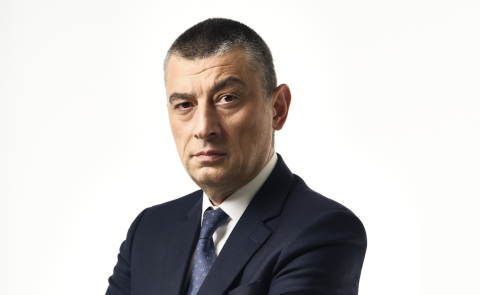
Giorgi Gakharia: The EU Should Engage Georgia Despite Its Democratic Backsliding
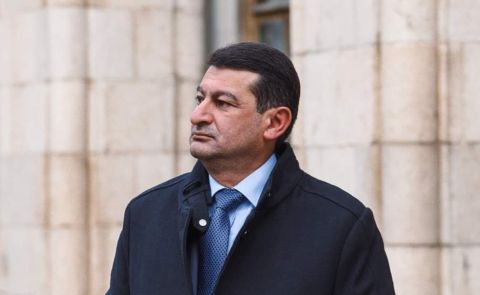
Peace or Capitulation? Shahverdyan on Armenia-Azerbaijan Agreement and the Nagorno-Karabakh Crisis
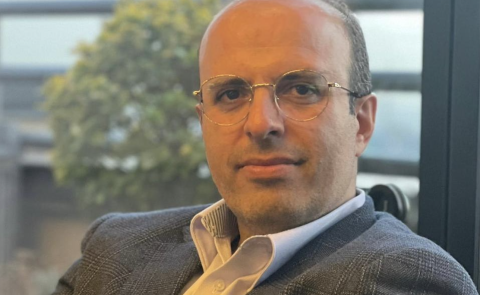
Ali Mousavi Khalkhali: Iran Will Avoid Conflict in the Caucasus
